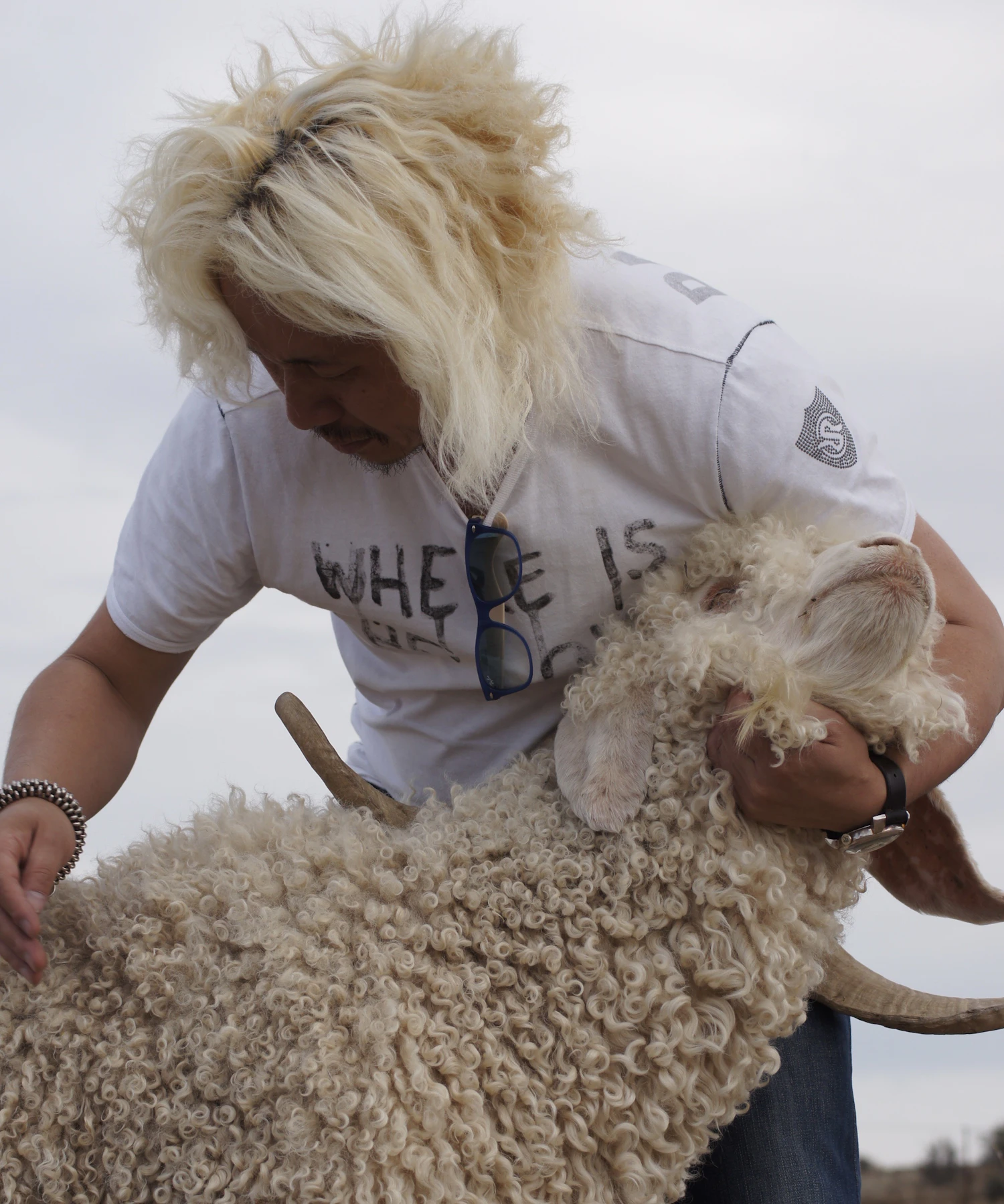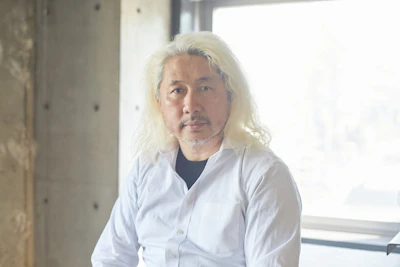

Born in Sagae City, Yamagata Prefecture, in 1966. After graduating from Bunka Fashion College, he worked for an apparel manufacturer. He joined Sato Seni in 1992 to take over his family's business and assumed the position of President in 2005.
He has been committed to 'manufacturing' in all processes from yarn making to knitting finishing. By launching original products worldwide, he was able to establish a high-value brand of his own. He grew his business to the point where he could supply yarn to top brands in Europe and the U.S., as well as pioneered distribution by directly appealing knitwear to customers.
While serving as chairman of the YAMAGATA KNIT INDUSTRIAL ASSOCIATION and NIHON KNIT INDUSTRIAL ASSOCIATION, he's also the president of the Sagae Tourism & Convention Bureau, working on revitalizing the local economy.
Realizating his Approach to Manufacturing at an Exhibition in Italy
Could you tell us about how Sato Seni was founded?
Our company was founded by my great-grandfather in 1932, but it was my grandfather who built the spinning mill. His motivation was that he heard there was a silk manufacturing company in the western part of Japan and went there for a tour. He was inspired when he saw the actual process of making thread.
However, being farmers originally, they didn't have much money at that time. Back then, banks didn't lend money easily, so they started by borrowing money from locals. They used wood and disassembled old weaving machines to reassemble them, creating the necessary machines. The loom that was made back then is still at our factory today.
How did Sato become involved with Sato Seni?
I had been doing boxing for a long time. I was practicing hard to become a 'world champion', and I made it to the 2nd rank in Japan. However, when I saw the limit of my talent, I quit boxing and decided to follow the path of working in the family business. Since I was a child, I had been thinking, "One day I will have to take over my parents' company."
After graduating from Bunka Fashion College, I got a job at an apparel company in Tokyo. It was after I got married that I returned to my hometown. When I returned, the factory had become very small.
In the midst of this, my father bought 7 knitting machines. I remember being surprised because our company was not large enough to buy machines. High-gauge machines were trendy at the time, but the ones we bought were just a step behind.
Every day, I tried various things until late at night, and I realized that interesting things could be made by mixing 7-gauge or 12-gauge threads. From there, I bought machines with even lower gauges, such as 5-gauge and 3-gauge, and started knitting mixed with various thick threads.
Even as your operations shrunk, you engaged in various initiatives.
The flow shifted significantly about 30 years ago when foreign products began to flood into Japan. Even though the quality of the yarn, which is the raw material, remained the same, the labor costs could be reduced to 1/20 of Japan's cost in China, and the dyeing costs were also cheaper. High-speed, large-scale, automated machines were required, but it was difficult to meet all these demands.
The turning point was when I was invited to an exhibition in Italy. At that time, I picked up a sweater in Tokyo and found it very interesting. I found out from the trading company that it was made with Italian yarn, so I ordered some.
At that time, the Italian company invited me, saying, "There is an exhibition, why don't you come and see it?" I thought, "Our company is not the kind to go to Italy..." but I decided to go, thinking, "This kind of chance will never come again," because I thought I would understand how to make it if I went to see the factory.
I went on a factory tour with the intention of stealing the technology, but the people in the factory passionately explained what they had made, saying things like, "Try touching this," and "It's light, isn't it?" While listening to them, I felt a pain in my chest. I felt that I should not imitate them. I thought that we, in our factory, must create things and make new culture.
At that time, the stance of the Japanese apparel industry was to obtain information from Europe and make the same products. There was no originality, and they only made sweaters of a predetermined shape.
What I am aiming for is a company that creates new trends, like the factories in Italy. I thought at the time that unless we became such a company, we would eventually go under.
That's when your challenge began, Sato.
Yes. However, at that time in Japan, if you started your own brand in your own style and made it public, you would be subject to pressure. Therefore, I decided to start in New York rather than in Japan. I didn't have any new machines at that time, so again, I used old machines that I had modified.
Actually, it wasn't until about 120 years ago that good quality yarn began to be made in Japan. Before that, they used all the sheep's hair together without distinguishing between the age or length of the sheep's hair. Because they mixed long and short hair together to make the thread, the raw material was quite crude.
However, the machines used at that time were carefully made to be able to produce even if they were using such poor materials. Today's machines are designed to prioritize speed and cost reduction, and they can't make special things. The best structure for making your own products is an old machine. If you modify the machine yourself, yarn making becomes more fun.
.jpg?w=700&fm=webp)
This article is for members only.
Please register to read the rest of the article.
- Read members-only articles
and use text-to-speech. - Unlimited article favourites
and browsing history. - Attend members-only events.
- Get the latest information
with our email newsletter.




.JPG?w=400&fm=webp)
